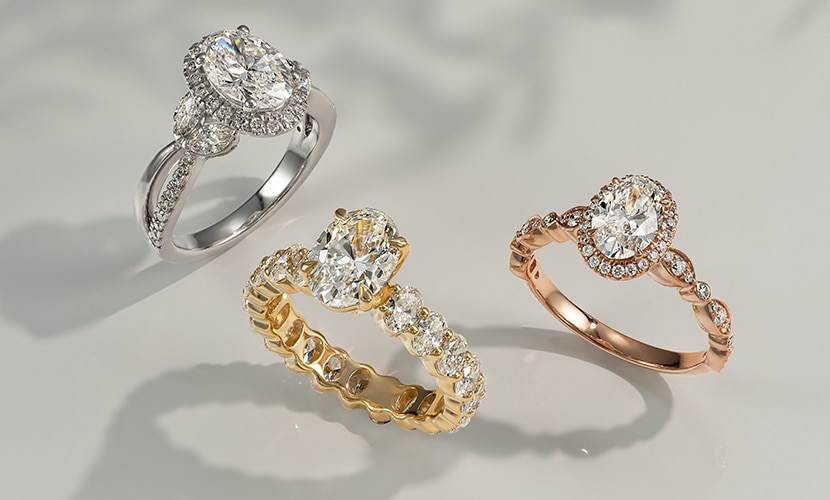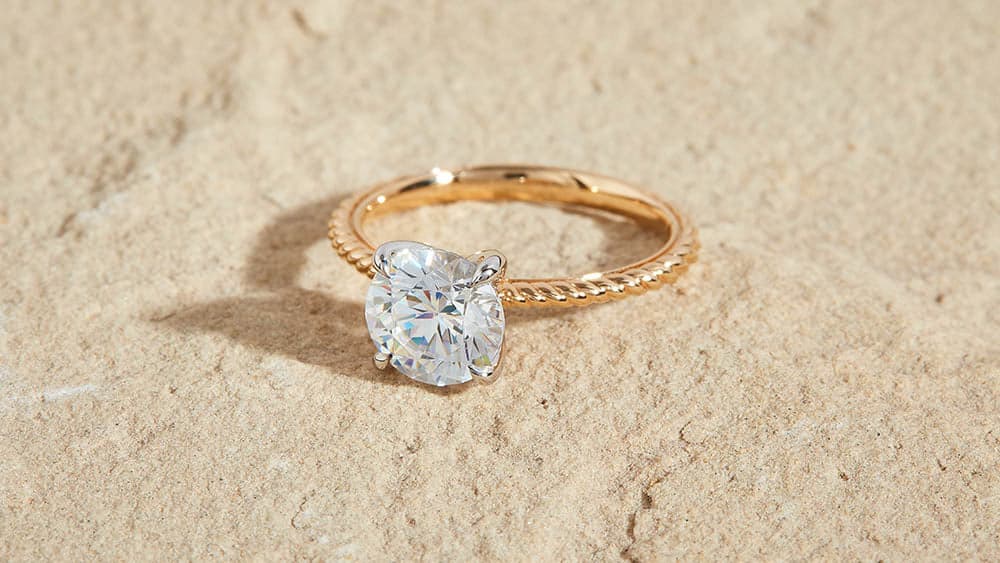
The tradition of presenting a diamond engagement ring as a symbol of betrothal is deeply ingrained in contemporary Western culture. However, the history of this practice is a fascinating journey through time, marked by a complex evolution. In this exploration, we delve into the historical origins and societal shifts that contributed to the establishment of diamond engagement rings as an enduring tradition.
Ancient Beginnings: The Roots of the Tradition
The Roman Custom:
In ancient Rome, the practice of giving rings was common. The Romans believed that the fourth finger of the left hand contained the ‘vena amoris,’ the vein of love, directly connected to the heart. Rings were thus exchanged to symbolise a binding commitment. However, these early rings were typically simple, made of iron or other less precious materials, as the focus was on the symbolism rather than the value of the ring.
The Symbolism of the Circle:
Across cultures, the circle has often been seen as an emblem of eternity, with no beginning or end. The hole in the middle represented a gateway or door. Therefore, a ring inherently became synonymous with lasting commitment.

The Advent of Diamonds in Engagement
The Archduke and the Diamond:
Many historians attribute the start of the diamond engagement ring tradition to Archduke Maximilian of Austria. In 1477, he gifted Mary of Burgundy a gold ring adorned with diamonds in the shape of an “M”, sparking a trend among European nobility.
The Diamond Rush and De Beers
The 19th century witnessed a surge in diamond discoveries in South Africa. This led to the establishment of De Beers Consolidated Mines in 1888, which quickly became a dominant force in the diamond market.
The Birth of “A Diamond Is Forever”:
In the 1930s, with diamond sales in decline due to the Great Depression, De Beers commissioned an advertising agency to boost its market. The result was the iconic slogan, “A Diamond is Forever,” introduced in 1947. This campaign, one of the most successful in history, firmly entrenched the diamond’s status as a symbol of eternal love.

Cultural Impact and the Modern Era
Hollywood and the Diamond Glitter:
The 20th century saw Hollywood rise as a potent cultural force. As stars flaunted their diamond engagement rings, the masses followed suit. Celebrities like Elizabeth Taylor, whose diamonds became almost as famous as she was, only solidified the stone’s association with glamour and romance.
Socio-Economic Indicators:
Post World War II, with economies booming, the middle class saw an upward mobility. For them, diamond rings became accessible and a way to showcase newfound affluence.
Contemporary Trends and Beyond
While diamond engagement rings continue to be a symbol of love and commitment, contemporary trends have introduced variations. Coloured gemstones, alternative metals, and custom designs now offer couples more choices than ever before. Furthermore, ethical concerns have prompted an interest in lab-grown diamonds and responsible sourcing.
Different cultures have their unique take on engagement traditions, but the diamond’s universality shines through.
In India, where arranged marriages are common, the diamond ring often serves as a token of mutual acceptance and a new beginning. In Japan, the tradition of diamond engagement rings only gained popularity post World War II but has come to symbolize modern love and commitment in the face of changing societal norms.
The Ethical Considerations
By the late 20th century, the dark side of the diamond industry began to emerge. The issues of conflict diamonds, human rights violations, and environmental concerns became prevalent.
The Kimberley Process:
Introduced in 2003, this sought to stem the flow of conflict diamonds. It’s an example of the diamond industry’s acknowledgment of the need for ethical sourcing.
Diamond engagement rings, from their nascent stages in ancient Rome to their cemented status in modern culture, have always been more than just jewellery. They represent love, commitment, and a promise of eternity. While the journey of the diamond engagement ring has seen its share of highs and lows, its allure remains undiminished.
As society continues to evolve, so will the narrative around diamond engagement rings. However, what remains constant is the human desire to symbolise profound emotions with something tangible and lasting. And in this context, the diamond engagement ring stands unparalleled.
I recently read a fascinating post on Candy Crow about how diamond engagement rings became a tradition. The article delves into the history and evolution of this enduring tradition, exploring the cultural and commercial factors that have made diamond rings synonymous with engagements. It’s an insightful read for anyone interested in the origins of this widespread practice and the symbolism behind diamond engagement rings. The post not only provides historical context but also offers a deeper understanding of why diamond rings hold such significance in modern engagements.
Similar to the intriguing history of diamond engagement rings discussed on Candy Crow, at Ecali, we appreciate the deep-rooted traditions and meanings behind the jewelry we create. Each Ecali ring, crafted with respect for tradition in Perth, Western Australia, begins with a vision – a vision that honors the historical significance of engagement rings while infusing them with contemporary elegance. Our commitment to creating exquisite Perth wedding rings is about blending the timeless allure of diamonds with modern design, much like the evolution of the diamond engagement ring tradition. We invite you to explore our collection and find a piece that not only symbolizes your love and commitment but also connects with the rich history of engagement jewelry.